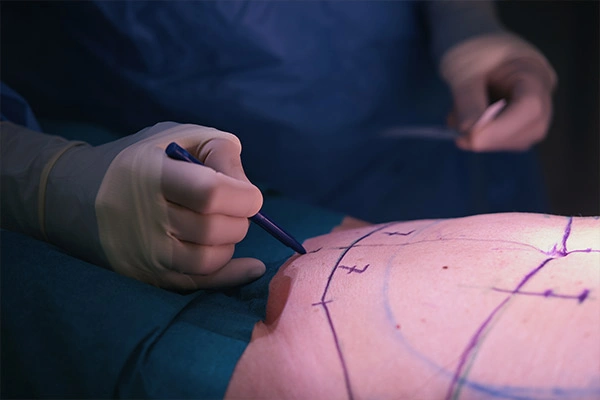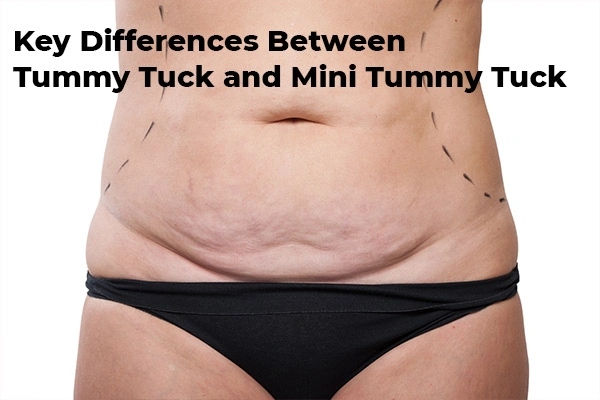When considering cosmetic surgery to improve the appearance of your abdomen, you might encounter two popular options: the full tummy tuck and the mini tummy tuck.
Understanding the differences between these procedures is crucial for making an informed decision about which is right for you.
This article delves into the specifics of each surgery, their benefits, risks, and considerations, helping you choose the best option for your needs.
What is a Tummy Tuck?
A tummy tuck, also known as abdominoplasty, is a thorough surgical procedure aimed at eliminating excess skin and fat from the abdominal region while tightening the underlying muscles.
This surgery is particularly beneficial for individuals experiencing significant skin looseness, often resulting from substantial weight loss or multiple pregnancies.
During a full tummy tuck, the surgeon creates a horizontal incision between the hip bones, which allows for the removal of surplus fat and skin.
The abdominal muscles are subsequently tightened, contributing to a firmer and flatter appearance.
The belly button may also be repositioned to achieve a more natural look. Typically, this procedure lasts between two to five hours, depending on its complexity.
What is a Mini Tummy Tuck?
A mini tummy tuck, or partial abdominoplasty, serves as a less invasive alternative to the full tummy tuck.
This procedure focuses on the lower abdomen, making it suitable for individuals with minimal excess skin and muscle looseness below the navel.
It’s particularly favoured by patients who are generally fit but struggle with a small amount of persistent lower belly fat and skin that does not respond to diet and exercise.
In a mini tummy tuck, the surgeon makes a shorter horizontal incision above the pubic area.
Unlike a full tummy tuck, the belly button typically remains untouched.
The surgeon then removes excess skin and fat and tightens the lower abdominal muscles. The surgery generally takes about one to two hours.
Key Differences Between Tummy Tuck and Mini Tummy Tuck
The primary difference between a tummy tuck and a mini tummy tuck lies in the extent of the surgery.
A full tummy tuck addresses both the upper and lower abdomen, making it suitable for those with significant skin laxity and muscle separation.
On the other hand, a mini tummy tuck targets only the lower abdomen, making it ideal for individuals with less extensive issues.
Recovery time and scarring also differ between the two procedures.
A full tummy tuck involves a longer recovery period, usually around six weeks, and results in a more noticeable scar from hip to hip.
Conversely, a mini tummy tuck has a shorter recovery time, typically around two weeks, and leaves a smaller, less conspicuous scar.
Cost is another factor to consider. Due to its comprehensive nature, a full tummy tuck is generally more expensive than a mini tummy tuck. However, the exact cost can vary based on the surgeon’s experience, location, and specific patient needs.
Benefits of a Full Tummy Tuck
The full tummy tuck offers several benefits, particularly for those with extensive abdominal issues.
This procedure provides comprehensive skin and fat removal, significantly improving the appearance of the midsection.
The tightening of abdominal muscles also helps enhance core strength and stability, potentially alleviating back pain and improving posture.
Moreover, a full tummy tuck can address issues such as diastasis recti, a condition where the abdominal muscles separate, commonly seen in post-pregnancy women.
By repairing this muscle separation, a tummy tuck can restore the abdominal wall’s integrity, leading to a firmer and flatter stomach.
Benefits of a Mini Tummy Tuck
The mini tummy tuck offers numerous advantages for those with minor abdominal issues.
It is a less invasive procedure with a shorter recovery time, allowing patients to return to their daily activities more quickly.
The smaller incision means less scarring, which is a significant benefit for those concerned about visible marks.
This procedure is ideal for individuals who are close to their ideal weight but have stubborn lower belly fat and loose skin that don’t respond to diet and exercise.
By targeting this specific area, a mini tummy tuck can provide a more toned and contoured appearance with minimal downtime.
Risks and Considerations
Both tummy tuck and mini tummy tuck surgeries come with inherent risks.
Common risks include adverse reactions to anaesthesia., infection, and blood clots. However, each procedure has specific risks.
For a full tummy tuck, these can include significant scarring, prolonged swelling, and changes in skin sensation.
For a mini tummy tuck, while risks are generally lower, patients may still experience temporary numbness or reduced skin sensation around the incision site.
Choosing a qualified, experienced surgeon is crucial to minimising these risks.
It is essential to thoroughly research potential surgeons, review their credentials, and consult with them to discuss your goals and concerns.
Additionally, being in good overall health and following pre- and post-operative care instructions can help ensure a smoother recovery and better results.
How to Decide Which Procedure is Right for You
Deciding between a full tummy tuck and a mini tummy tuck depends on several factors, including the amount of excess skin and fat, muscle laxity, overall health, and aesthetic goals.
Individuals with significant skin laxity and muscle separation typically benefit more from a full tummy tuck. Conversely, those with minor issues confined to the lower abdomen might find a mini tummy tuck to be sufficient.
Consulting with a surgeon is essential for making an informed decision.
During the consultation, the surgeon will evaluate your specific needs, discuss your goals, and recommend the most appropriate procedure.
Personalised medical advice is crucial to achieving the best possible outcome and ensuring your safety.
Conclusion
Both the full tummy tuck and mini tummy tuck offer substantial benefits, but they cater to different needs. Understanding the differences between these procedures, along with their benefits and risks, is crucial for making an informed decision. Consulting with a qualified plastic surgeon can provide personalised guidance, ensuring you choose the best option for your individual needs.











